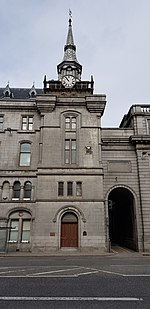St Andrew's Cathedral, Aberdeen
Category A listed buildings in AberdeenCathedrals of the Scottish Episcopal ChurchChurches in AberdeenListed cathedrals in ScotlandUse British English from December 2017 ... and 1 more
Vague or ambiguous time from June 2020

St Andrew's Cathedral (Scottish Gaelic: Cathair-eaglais Naomh Anndra), or the Cathedral Church of Saint Andrew, is a cathedral of the Scottish Episcopal Church situated in the Scottish city of Aberdeen. It is the see of the Bishop of Aberdeen and Orkney, who is the Ordinary of the Diocese of Aberdeen and Orkney.
Excerpt from the Wikipedia article St Andrew's Cathedral, Aberdeen (License: CC BY-SA 3.0, Authors, Images).St Andrew's Cathedral, Aberdeen
King Street, Aberdeen City City Centre
Geographical coordinates (GPS) Address External links Nearby Places Show on map
Geographical coordinates (GPS)
| Latitude | Longitude |
|---|---|
| N 57.1491 ° | E -2.0931 ° |
Address
St. Andrews Cathedral
King Street 28
AB24 5AX Aberdeen City, City Centre
Scotland, United Kingdom
Open on Google Maps








